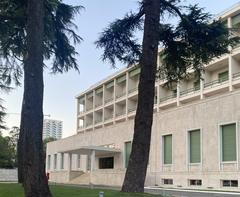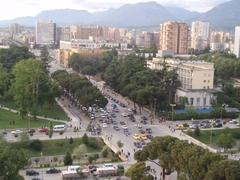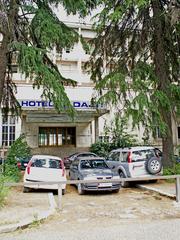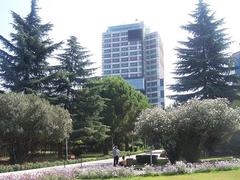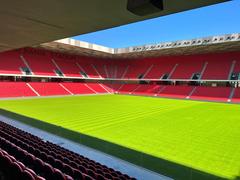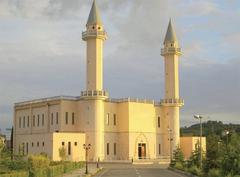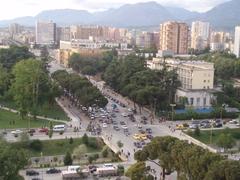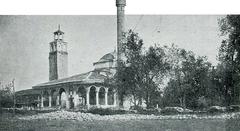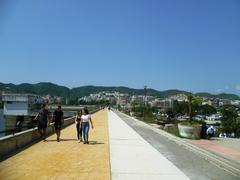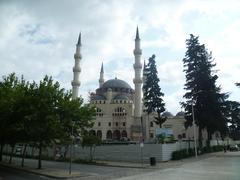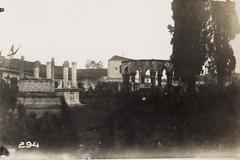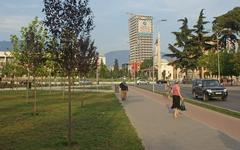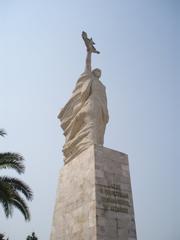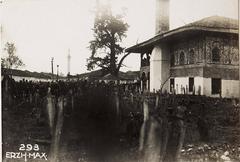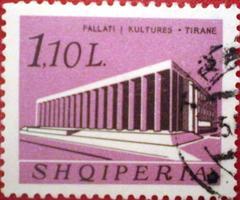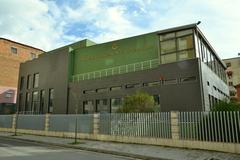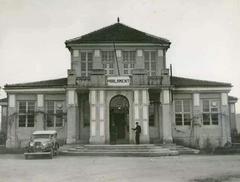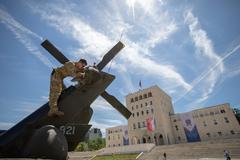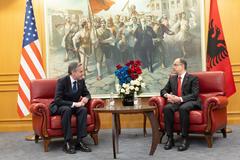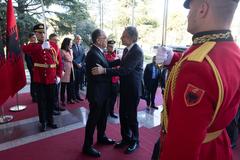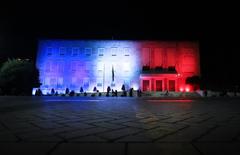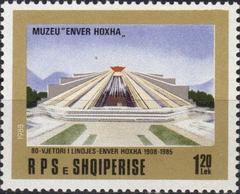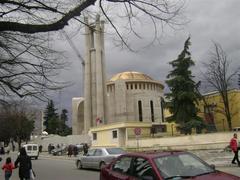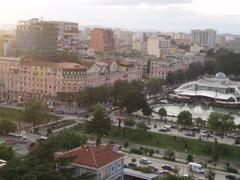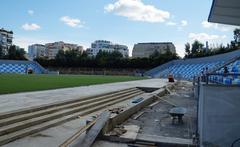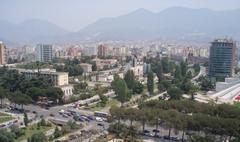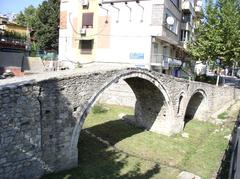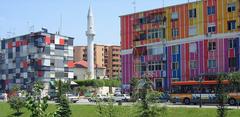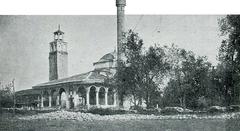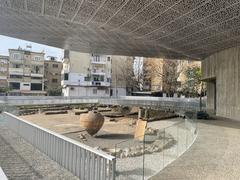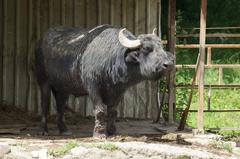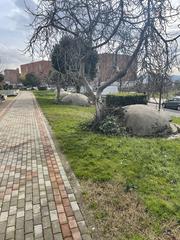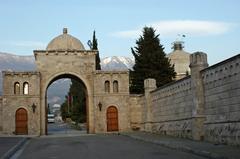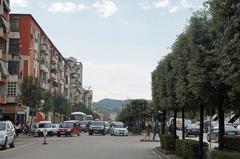
Hotel Dajti Tirana: Visiting Hours, Tickets, and Travel Guide
Date: 14/06/2025
Introduction
Hotel Dajti, a monumental landmark in Tirana, Albania, encapsulates the city’s 20th-century transformation and architectural ambition. Built during the Italian occupation and designed by Gherardo Bosio, this Rationalist structure is both a testament to Tirana’s urban modernization and a witness to its political and social upheavals. Although no longer operating as a hotel, the building’s preserved façade and adaptive reuse as part of the Bank of Albania continue to make it a focal point for visitors and locals alike (TICA Albania; Architectuul).
This guide provides comprehensive information for those wishing to explore the history, architecture, and visitor options for Hotel Dajti. Whether you are interested in its unique architectural heritage or seeking practical advice for your Tirana itinerary, this article covers everything from historical context and significance to visiting tips and nearby attractions (Bank of Albania; Nomads Travel Guide; Matias Travel).
Table of Contents
- Origins and Construction
- Architectural Significance
- Role in Albanian History
- Transformation and Adaptive Reuse
- Visitor Information
- Nearby Attractions
- FAQ
- Travel Tips
- Summary and Further Resources
Origins and Construction
Hotel Dajti arose from the Italian occupation’s vision to modernize Tirana in the late 1930s. The city, previously dominated by Ottoman-era inns, was transformed through a new regulatory plan that sought to project Albania as a progressive, European capital (TICA Albania). Under the direction of urban planner and architect Gherardo Bosio, the hotel was constructed as part of a wider initiative that included the main city boulevard—now Bulevardi Dëshmorët e Kombit.
Bosio’s Rationalist design, with interiors by Gio Ponti, emphasized clean lines and functional elegance. Construction began in the late 1930s and the hotel opened in 1942, shortly after Bosio’s death (Architectuul; Architectuul). The building’s advanced features for its time—including running water and ensuite bathrooms in every room, and Albania’s first hotel elevator—set a new standard for hospitality in the region.
Architectural Significance
Hotel Dajti is a hallmark of Italian Rationalism, reflecting the era’s preference for geometric form, simplicity, and urban continuity (Paesaggio Urbano). Its marble-clad ground floor and cantilevered canopy lead to a grand, double-height atrium, once adorned with Murano glass lamps. The structure spanned 12,000 square meters, including its parks and courtyards, and was technologically ahead of its time, boasting 91 rooms and comprehensive amenities (Architectuul; Architectuul).
Role in Albanian History
Wartime and Early Communist Era
From its opening, Hotel Dajti served as a cosmopolitan venue for diplomats and officials. During World War II, it became a hub for political and social events. Under early communist rule, the hotel even temporarily housed the government (Architectuul).
Socialist Period (1944–1990)
During the communist era, Hotel Dajti was the city’s only accommodation for foreign guests, tightly controlled by the state. Guest rooms were surveilled, reinforcing the regime’s security priorities (Nomads Travel Guide; Wikipedia). For most Albanians, access was strictly forbidden, further enhancing its mystique and status.
Post-Communist Decline and Closure
With the fall of communism, the hotel’s role diminished. State ownership persisted, but investment waned, leading to closure in 2002. The building suffered neglect and vandalism during subsequent years (TICA Albania).
Transformation and Adaptive Reuse
Cultural Monument Status
In 2002, the Albanian government designated Hotel Dajti a protected cultural monument (Architectuul). Despite this, the structure saw little use until it was acquired by the Bank of Albania.
Bank of Albania Acquisition and Restoration
Purchased in 2010, the Bank of Albania undertook restoration—preserving its historic features while converting spaces for office and public use (Bank of Albania; Paesaggio Urbano). Occasional cultural events and art exhibitions are now held here, providing rare opportunities for public access (Wikipedia).
Visitor Information
Current Status and Accessibility
- Exterior Viewing: The hotel’s façade and grounds on Bulevardi Dëshmorët e Kombit are freely accessible at any time.
- Interior Access: Entry is typically restricted, except during special events or guided tours. These are announced via the Bank of Albania’s website or local tourist information centers.
Tickets and Entry
- Exterior: No ticket required.
- Special Events/Tours: Tickets or pre-registration may be necessary; details are announced for each event.
Getting There
- By Foot: Centrally located, Hotel Dajti is within walking distance of Skanderbeg Square and major attractions (Matias Travel).
- By Taxi or Bus: Easily reachable from all parts of Tirana; taxis and multiple bus lines serve the city center (AlexandraTravel).
Accessibility
- The surrounding area features wide sidewalks and ramps, generally suitable for visitors with disabilities. Confirm details before attending special events or tours.
Nearby Attractions
Combine your visit to Hotel Dajti with these Tirana highlights:
- Skanderbeg Square: The city’s main plaza, just a short walk away.
- National History Museum: Albania’s largest, showcasing the nation’s story.
- Rinia Park: A popular green space, located directly opposite the hotel.
- Grand Park of Tirana: Ideal for strolls and relaxation (Traveling Season).
- Blloku District: Vibrant for nightlife and dining (AlexandraTravel).
- Dajti Ekspres Cable Car: For panoramic city views (Traveling Season).
FAQ
Q: Can I visit the inside of Hotel Dajti?
A: Interior access is typically only available during special events, guided tours, or by prior arrangement; otherwise, only the exterior can be admired.
Q: Are there entrance fees?
A: No fee for exterior viewing; special events may require tickets.
Q: What are the opening hours?
A: The exterior is accessible at any time. Interior availability is event-dependent.
Q: Are guided tours available?
A: Some local tour operators include Hotel Dajti in their historical walking routes (Matias Travel).
Q: Is the site accessible for people with disabilities?
A: The exterior area is accessible, but interior access depends on event arrangements.
Travel Tips
- Best Time to Visit: Spring (April–June) and autumn (September–October) offer pleasant weather and fewer crowds (Albania360).
- Photography: Morning and late afternoon provide the best lighting for façade photos.
- Language: Albanian is the official language; English is common in tourist areas.
- Currency: Albanian Lek (ALL). Credit cards are widely accepted, but carry some cash for small purchases.
Summary and Further Resources
Hotel Dajti stands as a symbol of Tirana’s modern identity and turbulent history. Its preserved Rationalist architecture, central location, and evolving function—from luxury hotel to state institution—make it a compelling destination for history enthusiasts and urban explorers alike. While interior access is generally reserved for special occasions, its imposing exterior and proximity to Tirana’s main attractions ensure it remains a highlight of any visit to the Albanian capital (Architectuul; Wikipedia; Nomads Travel Guide; Matias Travel).
For updates on tours, events, and accessibility, consult the Bank of Albania’s official page and the Tirana Tourist Information Center.
References and Further Reading
- TICA Albania - Hotel Dajti
- Architectuul - Hotel Dajti
- Bank of Albania - Former Dajti Hotel Building
- Nomads Travel Guide - Hotel Dajti
- Matias Travel - Best Things to Do in Tirana
- Wikipedia - Hotel Dajti
- Paesaggio Urbano - Restoration Article
- AlexandraTravel - Tirana Tourist Attractions
- Albania360 - Best Time to Visit
- The Endless Travellers - Is Tirana Worth Visiting?
- Traveling Season - Tirana Travel Guide
